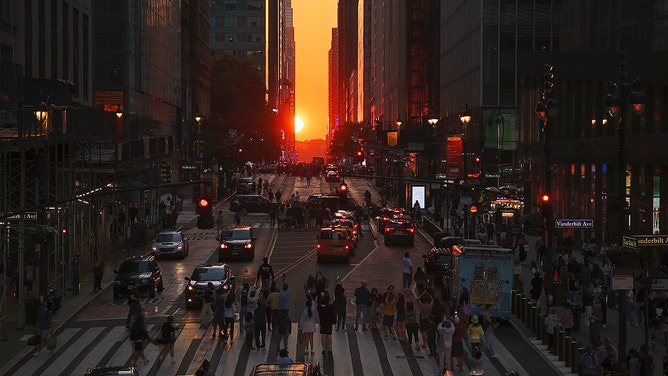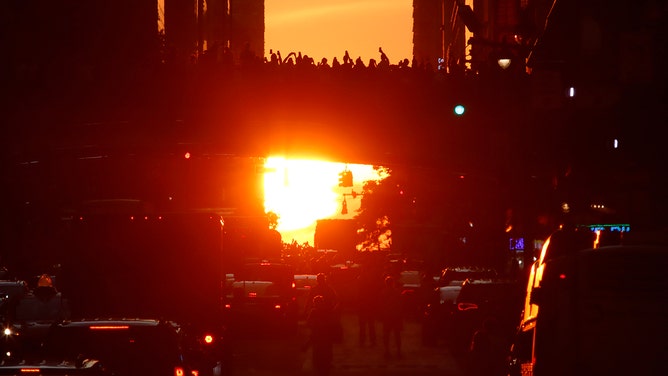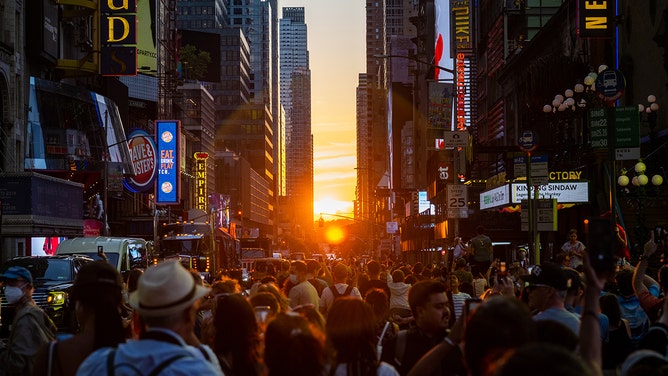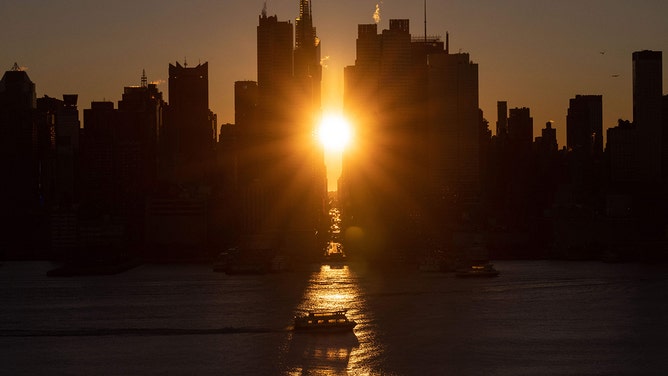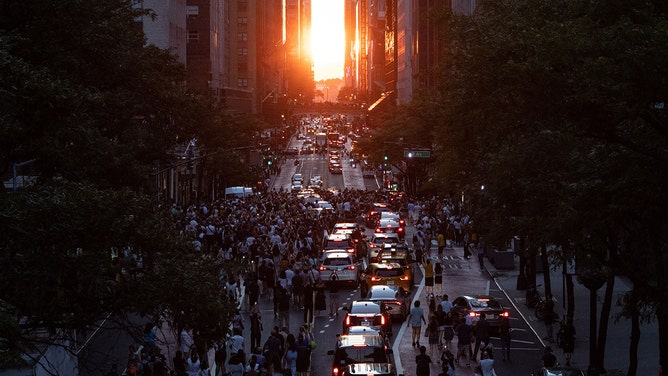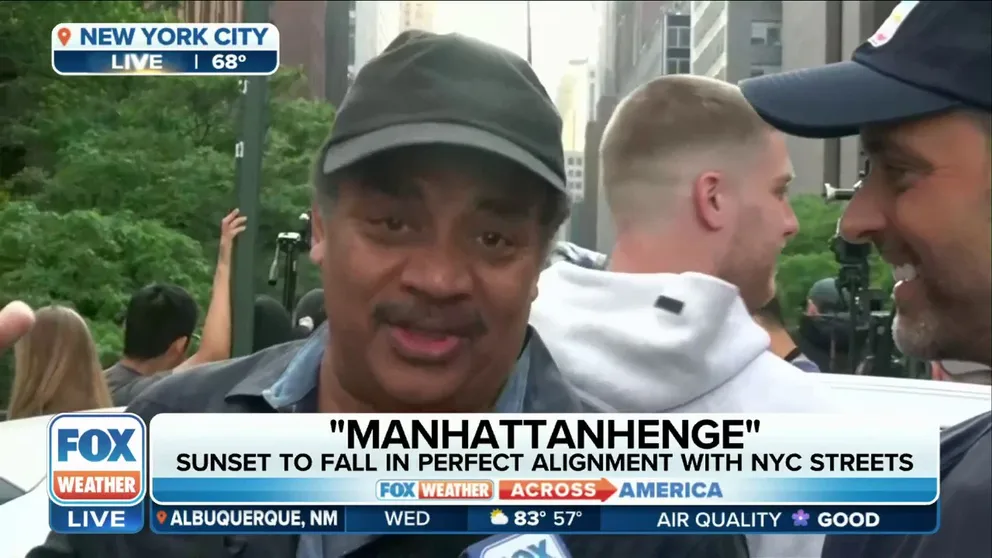New York City's sunset phenomenon Manhattanhenge returns for first time this year
This breathtaking phenomenon happens twice a year when the Sun aligns perfectly with the east-west streets of Manhattan, casting a radiant glow across the city.
Watch: Setting sun aligns with Manhattan's street grid
Crowds gathered on the streets of Manhattan on Tuesday, May 28, 2024, as a Manhattanhenge sunset glowed.
NEW YORK – Get ready for the highly anticipated return of Manhattanhenge, New York City's beloved Instagram-worthy sunset event.
This breathtaking phenomenon happens twice a year when the Sun aligns perfectly with the east-west streets of Manhattan, casting a radiant glow across the city.
THESE PHOTOS OF THE SUN WILL PUT YOUR 4K TV TO SHAME
This year, a half Sun will be visible on the city's grid at 8:13 p.m. ET Tuesday, according to the American Museum of Natural History. A full Manhattanhenge sunset is expected to occur at 8:12 p.m. ET Wednesday, offering a perfect chance for both locals and visitors to capture this breathtaking moment.
Spectators can expect sunny weather Tuesday with a high in the lower 80s. However, Wednesday's forecast indicates less favorable conditions with a chance of thunderstorms.
The best locations to view Manhattanhenge include 14th Street, 23rd Street, 34th Street, 42nd Street and 57th Street.
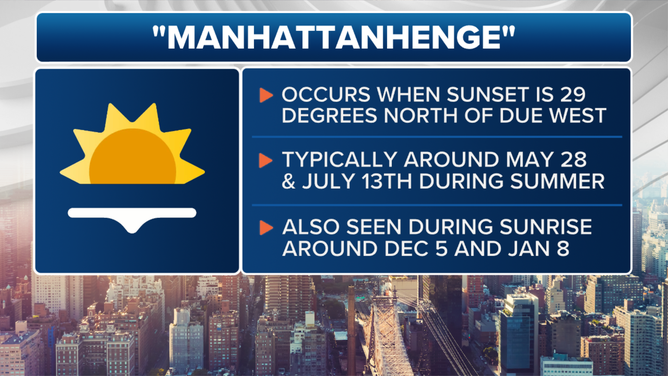
The first Manhattanhenge sunset of 2024 is Wednesday. The full Sun should be visible about 8:20 p.m. It is best viewed from the east side and from the widest, cross-town streets.
(FOX Weather)
You can also witness the awe-inspiring sight by heading as far east as possible with views of New Jersey across the Hudson River. Additionally, you can catch a glimpse from the Tudor City Overpass in Manhattan and Hunter's Point South Park in Long Island City, Queens.
If you miss this event, the next chance to witness Manhattanhenge will be on July 12 (full Sun) and July 13 (half Sun).
FILE – Neil deGrasse Tyson talks about 'Manhattanhenge'
Neil deGrasse Tyson talks to FOX Weather's Nick Kosir about "Manhattanhenge." He coined the term to describe a phenomenon that is now widely anticipated.
How did Manhattanhenge get its name?
Astrophysicist Neil deGrasse Tyson introduced the term Manhattanhenge in a 1997 article in the magazine Natural History.
He was influenced by a visit to Stonehenge during his teenage years and participated in an expedition led by Gerald Hawkins, the scientist who first suggested that Stonehenge's megaliths served as an ancient astronomical observatory.
Tyson, a native New Yorker, noticed that the Manhattan sunset between the high-rises resembled the solstice Sun at the center of Stonehenge. The planners didn't intend to align Manhattan with the Sun as the Stonehenge builders did; it just worked out that way.


